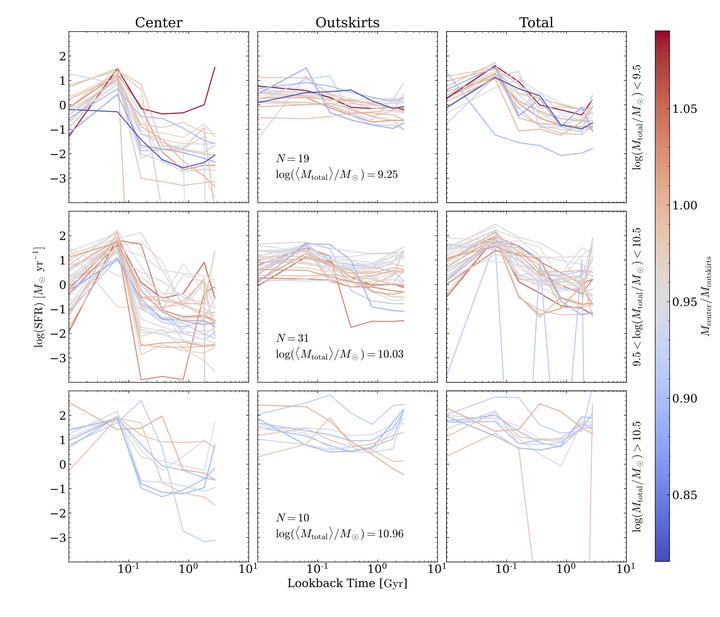The Differential Assembly History of the Centers and Outskirts of Main Sequence Galaxies at $z∼2.3$

Abstract
We present a study of spatially-resolved star formation histories (SFHs) for 60 z~2.3 main-sequence, star-forming galaxies selected from the MOSDEF spectroscopic survey in the GOODS-N field, with a median logM=9.75 and a range of 8.6<logM<11.5. Photometry is decomposed into a central and outer spatial component using observed z_F850LP-H_F160W colors. The Prospector code is used to model spectral energy distributions for the centers, outskirts, and integrated galaxy using HST/ACS and WFC3, Spitzer/IRAC, and ground-based photometry, with additional constraints on gas-phase metallicity and spectroscopic redshift from MOSDEF spectroscopy. For the low-resolution bands, spatially-resolved photometry is determined with an iterative approach. The reconstructed SFHs indicate that the majority of galaxies with logM<10.5 are observed while their central regions undergo relatively recent (<100 Myr) bursts of star formation, while the outskirts have a smooth, quasi-steady SFH. The enhanced star formation activity of the central parts is broadly consistent with the idea that it is produced by highly dissipative gas compaction and accretion. The wide range of central densities and sizes observed in the sample suggests that for the selected galaxies this process has started but is still far from being completed. The implication would be that selecting star-forming galaxies at cosmic noon frequently includes systems in an “evolved” evolutionary phase where the centers have recently started a burst of star formation activity that will likely initiate inside-out quenching in the next several hundred million years.